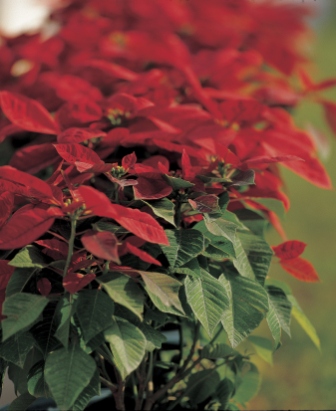
Poinsettias, a bright and cheerful symbol of the holiday season, are often thought of as “throwaway” plants and are set on the curb when their red blooms fade. Rather than buying a new plant each December, with proper care you can keep your poinsettias blooming for another holiday season.
Poinsettia plants enjoy indirect sunlight for at least six hours each day while they are blooming. They prefer to be slightly on the dry side and will not be happy if they are over watered. While the plant is flowering it should not be fertilized, but after the plant has finished blooming an all- purpose fertilizer may be applied.
To enjoy your poinsettia blooms for another holiday season, cut the plant back in early spring. It can be fertilized monthly and new growth will begin to appear later in the spring. Once there is no more danger of frost, your poinsettia may be kept outdoors for the summer. Fertilize it more frequently during the summer months and prune the plant to keep it from getting leggy.
As temperatures begin to cool in early fall, the plant should be brought indoors. Longer nights will cause poinsettias to set buds and produce flowers during November or December. To encourage your poinsettia to bloom for the Christmas holiday, you must carefully control the amount of light the plant receives.
To bloom for Christmas, the plant must be kept in total darkness for 14 hours each night during October, November and early December, along with 6-8 hours of bright sunlight. No peeking! Any stray light will upset the schedule.
Follow this schedule of daylight and darkness for 8-10 weeks and your poinsettia will reward you with a colorful holiday display.
Mike McGroarty is the owner of McGroarty Enterprises and the author of several books. You can visit his website at Freeplants.com and read his blog at Mikesbackyardnursery.com.
Related Articles & Free Email Newsletter
Bring in the Birds with These Plants




Comment here